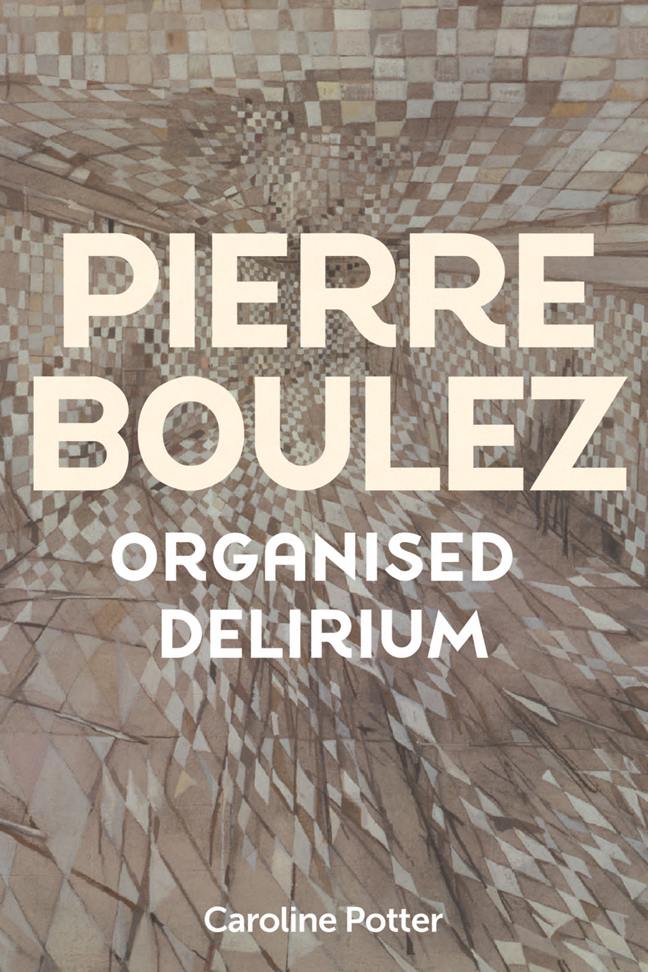Book contents
- Frontmatter
- Contents
- List of illustrations
- Acknowledgements
- Introduction: Organised Delirium
- 1 Surrealism in the 1930s and 40s
- 2 ‘A flayed lion’: Boulez as student
- 3 Serialism and surrealism: Boulez's instrumental music 1946–8
- 4 Fureur et mystère: the first versions of Boulez's René Char settings
- 5 The charm of numbers: continuing threads in Boulez's later music
- Select bibliography
- Index
5 - The charm of numbers: continuing threads in Boulez's later music
Published online by Cambridge University Press: 21 February 2024
- Frontmatter
- Contents
- List of illustrations
- Acknowledgements
- Introduction: Organised Delirium
- 1 Surrealism in the 1930s and 40s
- 2 ‘A flayed lion’: Boulez as student
- 3 Serialism and surrealism: Boulez's instrumental music 1946–8
- 4 Fureur et mystère: the first versions of Boulez's René Char settings
- 5 The charm of numbers: continuing threads in Boulez's later music
- Select bibliography
- Index
Summary
Boulez's Extraordinary Formative Phase was followed by a period when he completed very few works. After the Second Piano Sonata – explicitly an annihilation of the classical sonata model – and his Char settings, which Paul Griffiths so aptly describes as ‘confirmation that this last destruction proceeded through love’, how was Boulez to emerge from the wreckage? What would remain?
It is perhaps not surprising that this extremely intense compositional phase should have been followed by one of consolidation, though there are missing pieces in this jigsaw; for instance, Boulez started sketching a Symphonie-concertante for piano and orchestra in 1947 but lost the score. And even in the earliest stages of his career, Boulez's penchant for revising works was evident, and both Le Visage nuptial and Le Soleil des eaux would not reach their final forms for many years. What is more interesting is that Boulez's works of the 1940s served as repositories of musical ideas for new compositions almost until the end of his life. For Susan Bradshaw, ‘it is from the mid-1970s that he seems more and more to have opted for the art of recomposition at the expense of composition’, and the Notations in particular were reimagined in multiple guises, from the reuse of an individual theme to the recasting of some of these tiny piano pieces as much longer works for huge orchestra. His frequent reuse of the seven-note motif from the seventh Notation, as well as his subsequent recycling of a six-note motif based on the name of the philanthropist and conductor Paul Sacher, show that these ideas had the function of a fetish for Boulez. His continual obsession with these found objects is the main focus of this chapter.
Boulez's relative lack of musical productivity immediately after his Second Piano Sonata also had roots in his work as musical director of the Renaud–Barrault company, not only because these duties left him with less time to focus on composition, but also because his tours with the company prompted him to reassess his earlier enthusiasms. His shifting attitude to Artaud's ‘collective hysteria’ is exhibited in a letter written in 1950 to Pierre Souvtchinsky from Buenos Aires at the end of a tour with the Renaud–Barrault company.
- Type
- Chapter
- Information
- Pierre Boulez Organised Delirium , pp. 161 - 184Publisher: Boydell & BrewerPrint publication year: 2024



